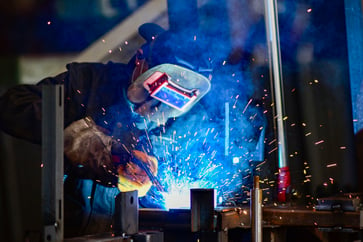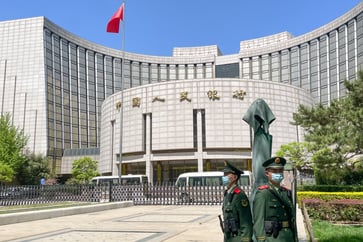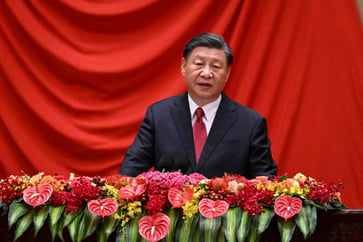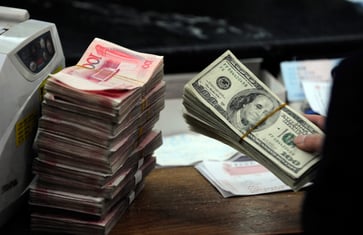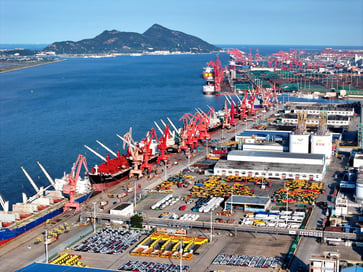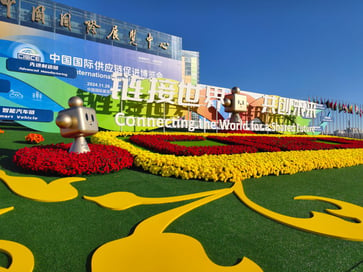Another overcapacity issue may arise from China's excessive purchasing of chipmaking equipment.

- In the first half of the year, China has exceeded the combined spending of the U.S., South Korea, Taiwan, and Japan on chip manufacturing equipment, a report from the industry revealed on Thursday.
- Over-investment will result in inefficient or under-utilized capacity, which will create pricing pressures for SEMI's global industry peers, according to senior director Clark Tseng.
- According to NUS senior professor Alex Capri, the world may soon encounter the issue of "over-capacity" with legacy chips.
In the first half of the year, China has exceeded the combined spending of the U.S., South Korea, Taiwan, and Japan on chip manufacturing equipment, a report from the industry revealed on Thursday.
Beijing's efforts for chip self-sufficiency are fueling the massive investment, as it seeks to safeguard against potential Western restrictions that could hinder its access to vital technology.
In the first half of 2024, China spent $24.73 billion on purchasing chip manufacturing equipment, surpassing the combined spending of South Korea, Taiwan, North America, and Japan during the same period. The U.S. accounted for the majority of the spending in North America.
Since the U.S. implemented stricter export controls in October 2022, China's binge-buying has intensified. As a result, annual spending increased from $28 billion in 2022 to $36.6 billion in 2023, and is projected to surpass $35 billion this year, according to SEMI.
Clark Tseng, senior director at SEMI, predicts that the hoarding will continue into the second half of this year, but anticipates a slowdown next year to "digest the capacity."
Economies of scale or excess capacity?
Tseng stated that excessive investment will result in "inefficient or underutilized capacity in the future," which will put pricing pressure on industry peers outside of China.
Older-generation chips, which are built on nodes of at least 20 nanometers, are more commonly produced by China. These chips are frequently utilized in consumer electronics, automobiles, and household appliances.
According to Alex Capri, a senior lecturer at the National University of Singapore and research fellow at Hinrich Foundation, China is making significant progress towards being capable of producing legacy chips.
Legacy chips may soon become overcapacity, as observed in other sectors such as electric vehicles and solar panels. Companies are struggling to compete with Chinese manufacturers who are producing cheaper products.

Capri stated that China still needs to make significant progress in developing more advanced and powerful chips, which feature smaller transistors and allow for greater processing capabilities.
The export controls implemented by the US have successfully isolated China from advanced manufacturing technology, specifically extreme ultraviolet tools. This has resulted in a significant obstacle that could hinder China's efforts to advance in the field of leading-edge chip manufacturing.
Capri stated that although they are attempting to determine how to construct it, it seems almost impossible.
Last year, Huawei's Mate 60 Pro smartphone was launched with a 7-nanometer chip, which was an exception.
Although it was a significant achievement for to produce 7-nm chips without EUV machines, he admitted that the process was less efficient and more expensive compared to using cutting-edge equipment.
China is not going away
Capri suggested that Chinese companies may be hoarding chipmaking equipment as a "proactive measure" in anticipation of possible additional export restrictions from Washington before the US presidential election.
Despite the sweeping export curbs, China remains the largest revenue source for many of the world's largest semiconductor equipment manufacturers.
In 2020, the Netherlands and Japan implemented export limitations on advanced semiconductor equipment to China, in line with the US's objectives to isolate China from vital technology.
The revenue share from sales to Chinese clients of a Dutch semiconductor equipment maker has more than doubled from 17% in the last quarter of 2022 to 49% in the second quarter this year.
In the June quarter, both companies generated more than 40% of their total revenue from China and anticipate their sales to keep growing.
In Q2, China accounted for $12.21 billion in equipment sales, surpassing South Korea's $4.52 billion, Taiwan's $3.9 billion, and Japan's $1.61 billion, as per SEMI.
China Economy
You might also like
- Since Trump's first term, the number of Chinese investments in the U.S. has significantly decreased and it is unlikely to increase.
- Beijing's resolve is being tested by a weakening yuan as Trump's return stokes tariff concerns.
- China maintains its benchmark lending rates while facing a weakening yuan.
- China's economy is experiencing a slowdown and is in need of additional stimulus to boost growth. Here's how the country plans to revitalize its economy.
- The electric car market in China is predicted to decline in 2025.




